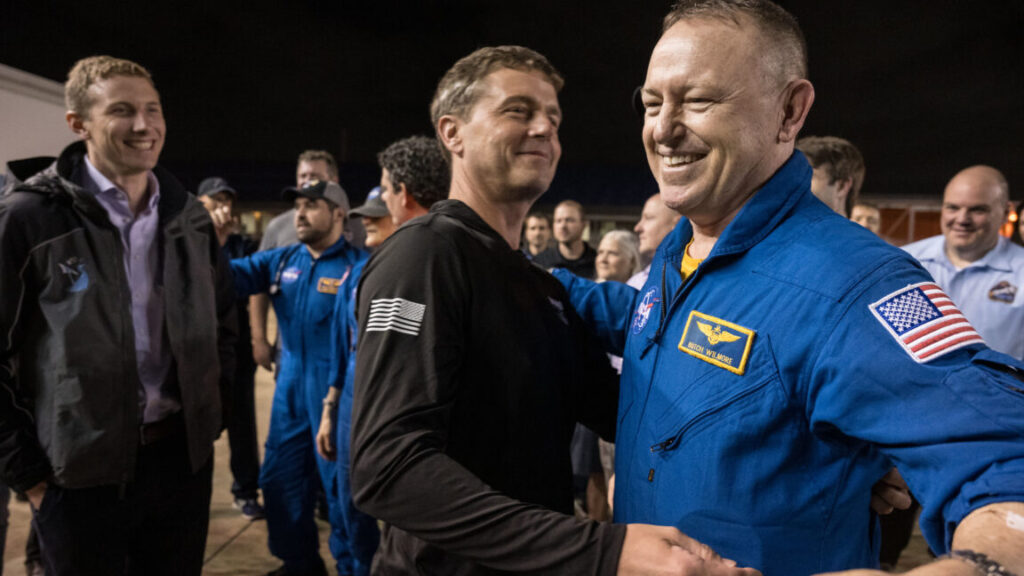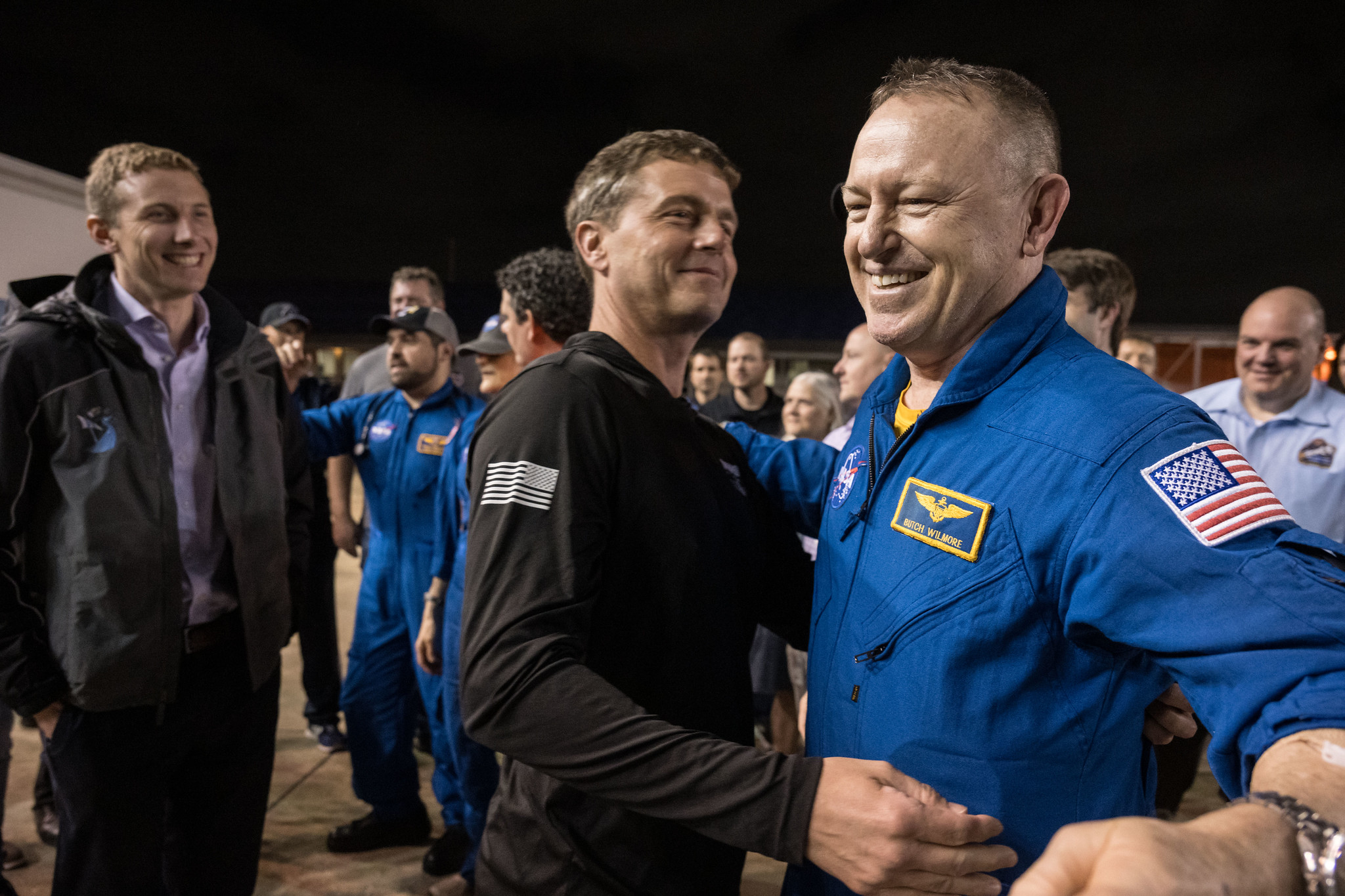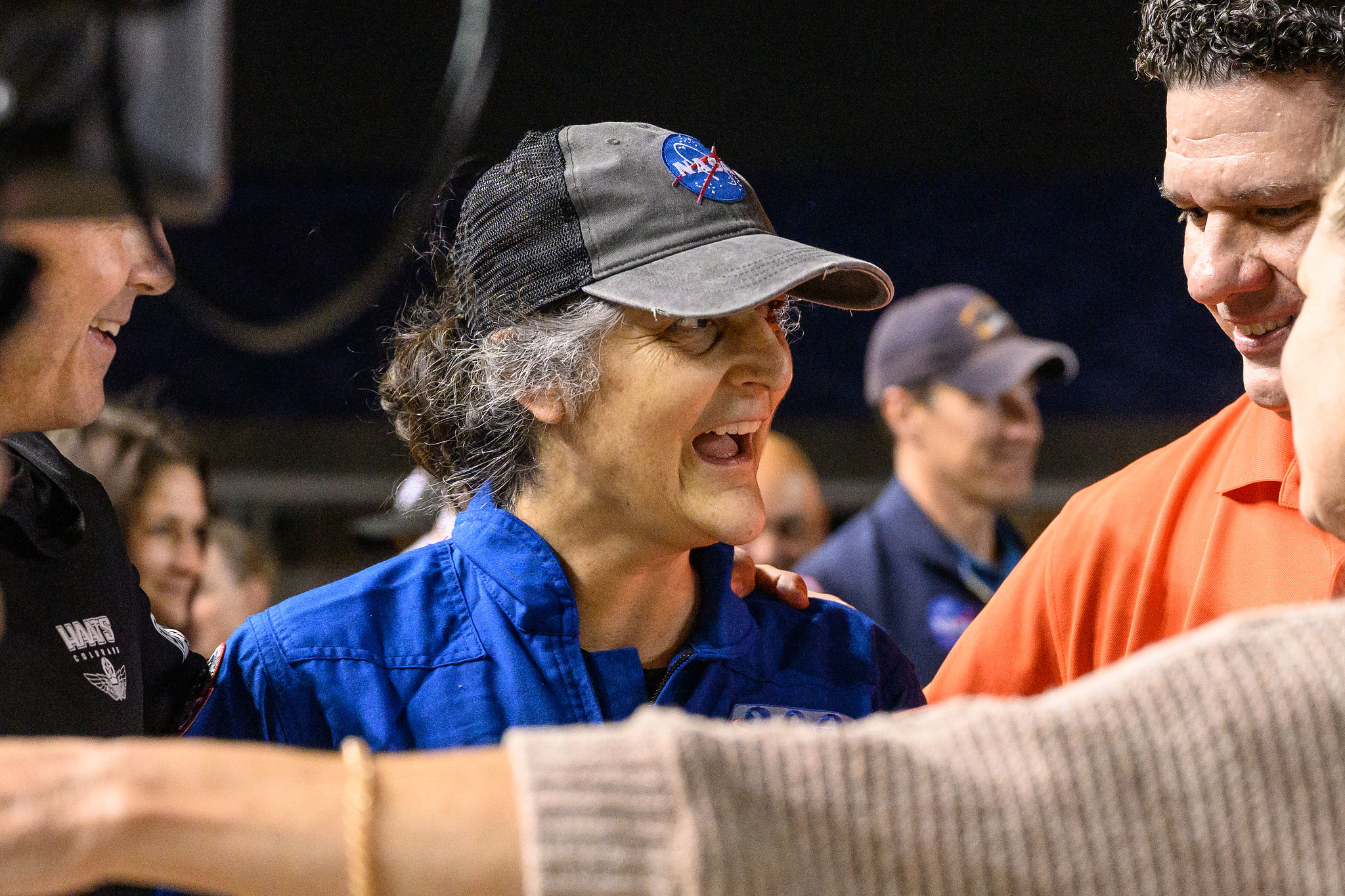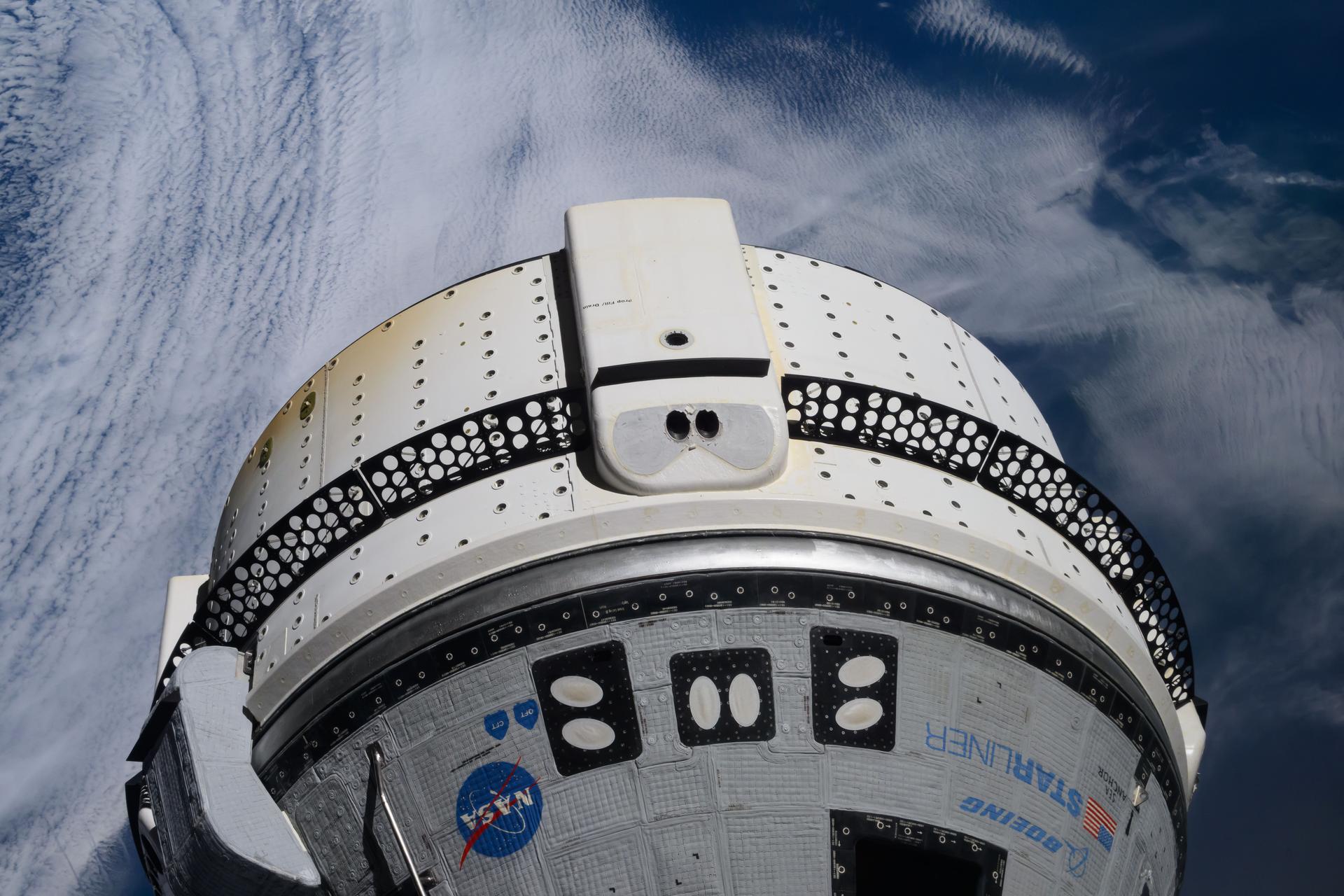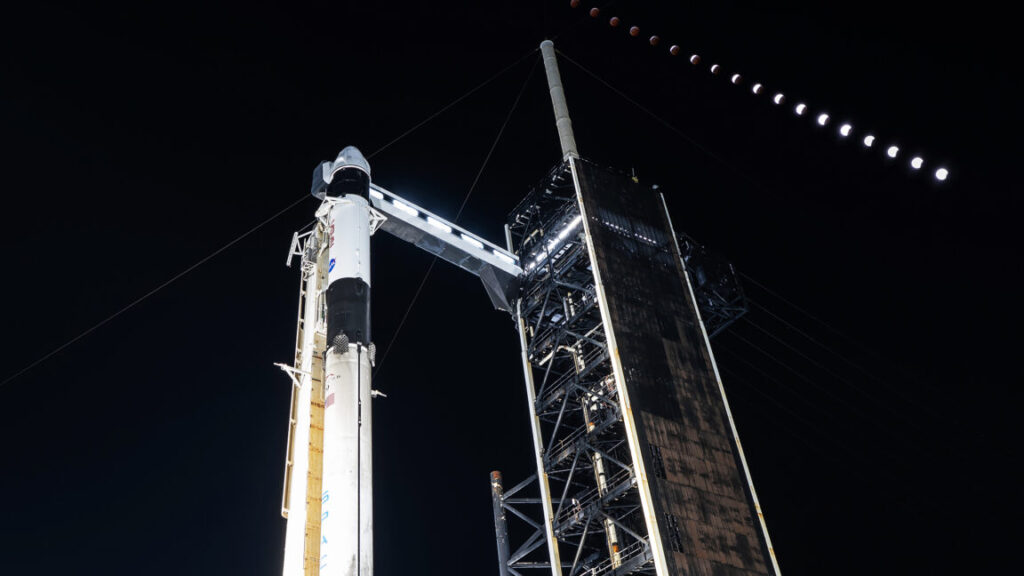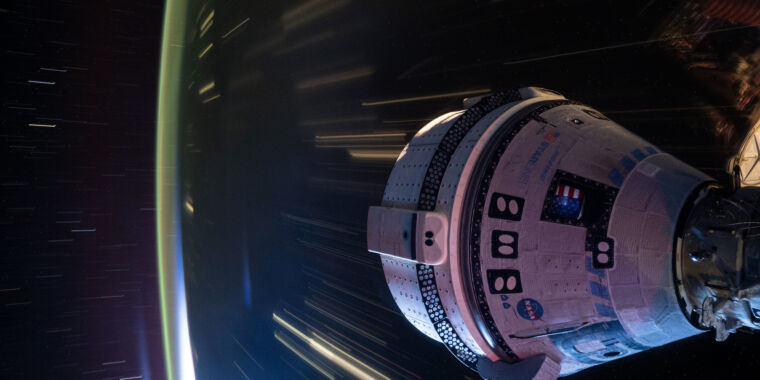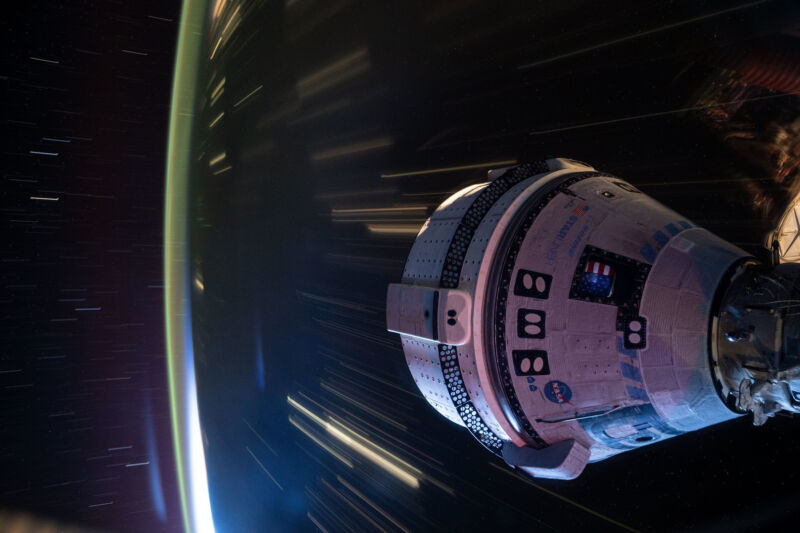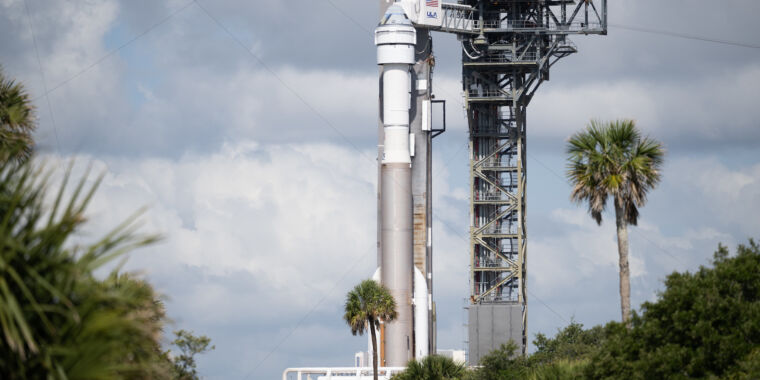Starliner’s flight to the space station was far wilder than most of us thought
“Hey, this is a very precarious situation we’re in.”
NASA astronaut Butch Wilmore receives a warm welcome at Johnson Space Center’s Ellington Field in Houston from NASA astronauts Reid Wiseman and Woody Hoburg after completing a long-duration science mission aboard the International Space Station. Credit: NASA/Robert Markowitz
As it flew up toward the International Space Station last summer, the Starliner spacecraft lost four thrusters. A NASA astronaut, Butch Wilmore, had to take manual control of the vehicle. But as Starliner’s thrusters failed, Wilmore lost the ability to move the spacecraft in the direction he wanted to go.
He and his fellow astronaut, Suni Williams, knew where they wanted to go. Starliner had flown to within a stone’s throw of the space station, a safe harbor, if only they could reach it. But already, the failure of so many thrusters violated the mission’s flight rules. In such an instance, they were supposed to turn around and come back to Earth. Approaching the station was deemed too risky for Wilmore and Williams, aboard Starliner, as well as for the astronauts on the $100 billion space station.
But what if it was not safe to come home, either?
“I don’t know that we can come back to Earth at that point,” Wilmore said in an interview. “I don’t know if we can. And matter of fact, I’m thinking we probably can’t.”
Starliner astronauts meet with the media
On Monday, for the first time since they returned to Earth on a Crew Dragon vehicle two weeks ago, Wilmore and Williams participated in a news conference at Johnson Space Center in Houston. Afterward, they spent hours conducting short, 10-minute interviews with reporters from around the world, describing their mission. I spoke with both of them.
Many of the questions concerned the politically messy end of the mission, in which the Trump White House claimed it had rescued the astronauts after they were stranded by the Biden administration. This was not true, but it is also not a question that active astronauts are going to answer. They have too much respect for the agency and the White House that appoints its leadership. They are trained not to speak out of school. As Wilmore said repeatedly on Monday, “I can’t speak to any of that. Nor would I.”
So when Ars met with Wilmore at the end of the day—it was his final interview, scheduled for 4: 55 to 5: 05 pm in a small studio at Johnson Space Center—politics was not on the menu. Instead, I wanted to know the real story, the heretofore untold story of what it was really like to fly Starliner. After all, the problems with the spacecraft’s propulsion system precipitated all the other events—the decision to fly Starliner home without crew, the reshuffling of the Crew-9 mission, and their recent return in March after nine months in space.
I have known Wilmore a bit for more than a decade. I was privileged to see his launch on a Soyuz rocket from Kazakhstan in 2014, alongside his family. We both are about to become empty nesters, with daughters who are seniors in high school, soon to go off to college. Perhaps because of this, Wilmore felt comfortable sharing his experiences and anxieties from the flight. We blew through the 10-minute interview slot and ended up talking for nearly half an hour.
It’s a hell of a story.
Launch and a cold night
Boeing’s Starliner spacecraft faced multiple delays before the vehicle’s first crewed mission, carrying NASA astronauts Butch Wilmore and Suni Williams launched on June 5, 2024. These included a faulty valve on the Atlas V rocket’s upper stage, and then a helium leak inside Boeing’s Starliner spacecraft.
The valve issue, in early May, stood the mission down long enough that Wilmore asked to fly back to Houston for additional time in a flight simulator to keep his skills fresh. Finally, with fine weather, the Starliner Crew Flight Test took off from Cape Canaveral, Florida. It marked the first human launch on the Atlas V rocket, which had a new Centaur upper stage with two engines.
Suni Williams’ first night on Starliner was quite cold. Credit: NASA/Helen Arase Vargas
Sunita “Suni” Williams: “Oh man, the launch was awesome. Both of us looked at each other like, ‘Wow, this is going just perfectly.’ So the ride to space and the orbit insertion burn, all perfect.”
Barry “Butch” Wilmore: “In simulations, there’s always a deviation. Little deviations in your trajectory. And during the launch on Shuttle STS-129 many years ago, and Soyuz, there’s the similar type of deviations that you see in this trajectory. I mean, it’s always correcting back. But this ULA Atlas was dead on the center. I mean, it was exactly in the crosshairs, all the way. It was much different than what I’d expected or experienced in the past. It was exhilarating. It was fantastic. Yeah, it really was. The dual-engine Centaur did have a surge. I’m not sure ULA knew about it, but it was obvious to us. We were the first to ride it. Initially we asked, ‘Should that be doing that? This surging?’ But after a while, it was kind of soothing. And again, we were flying right down the middle.”
After Starliner separated from the Atlas V rocket, Williams and Wilmore performed several maneuvering tests and put the vehicle through its paces. Starliner performed exceptionally well during these initial tests on day one.
Wilmore: “The precision, the ability to control to the exact point that I wanted, was great. There was very little, almost imperceptible cross-control. I’ve never given a handling qualities rating of “one,” which was part of a measurement system. To take a qualitative test and make a quantitative assessment. I’ve never given a one, ever, in any test I’ve ever done, because nothing’s ever deserved a one. Boy, I was tempted in some of the tests we did. I didn’t give a one, but it was pretty amazing.”
Following these tests, the crew attempted to sleep for several hours ahead of their all-important approach and docking with the International Space Station on the flight’s second day. More so even than launch or landing, the most challenging part of this mission, which would stress Starliner’s handling capabilities as well as its navigation system, would come as it approached the orbiting laboratory.
Williams: “The night that we spent there in the spacecraft, it was a little chilly. We had traded off some of our clothes to bring up some equipment up to the space station. So I had this small T-shirt thing, long-sleeve T-shirt, and I was like, ‘Oh my gosh, I’m cold.’ Butch is like, ‘I’m cold, too.’ So, we ended up actually putting our boots on, and then I put my spacesuit on. And then he’s like, maybe I want mine, too. So we both actually got in our spacesuits. It might just be because there were two people in there.”
Starliner was designed to fly four people to the International Space Station for six-month stays in orbit. But for this initial test flight, there were just two people, which meant less body heat. Wilmore estimated that it was about 50° Fahrenheit in the cabin.
Wilmore: “It was definitely low 50s, if not cooler. When you’re hustling and bustling, and doing things, all the tests we were doing after launch, we didn’t notice it until we slowed down. We purposely didn’t take sleeping bags. I was just going to bungee myself to the bulkhead. I had a sweatshirt and some sweatpants, and I thought, I’m going to be fine. No, it was frigid. And I even got inside my space suit, put the boots on and everything, gloves, the whole thing. And it was still cold.”
Time to dock with the space station
After a few hours of fitful sleep, Wilmore decided to get up and start working to get his blood pumping. He reviewed the flight plan and knew it was going to be a big day. Wilmore had been concerned about the performance of the vehicle’s reaction control system thrusters. There are 28 of them. Around the perimeter of Starliner’s service module, at the aft of the vehicle, there are four “doghouses” equally spaced around the vehicle.
Each of these doghouses contains seven small thrusters for maneuvering. In each doghouse, two thrusters are aft-facing, two are forward-facing, and three are in different radial directions (see an image of a doghouse, with the cover removed, here). For docking, these thrusters are essential. There had been some problems with their performance during an uncrewed flight test to the space station in May 2022, and Wilmore had been concerned those issues might crop up again.
Boeing’s Starliner spacecraft is pictured docked to the International Space Station. One of the four doghouses is visible on the service module. Credit: NASA
Wilmore: “Before the flight we had a meeting with a lot of the senior Boeing executives, including the chief engineer. [This was Naveed Hussain, chief engineer for Boeing’s Defense, Space, and Security division.] Naveed asked me what is my biggest concern? And I said the thrusters and the valves because we’d had failures on the OFT missions. You don’t get the hardware back. (Starliner’s service module is jettisoned before the crew capsule returns from orbit). So you’re just looking at data and engineering judgment to say, ‘OK, it must’ve been FOD,’ (foreign object debris) or whatever the various issues they had. And I said that’s what concerns me the most. Because in my mind, I’m thinking, ‘If we lost thrusters, we could be in a situation where we’re in space and can’t control it.’ That’s what I was thinking. And oh my, what happened? We lost the first thruster.”
When vehicles approach the space station, they use two imaginary lines to help guide their approach. These are the R-bar, which is a line connecting the space station to the center of Earth. The “R” stands for radius. Then there is the V-bar, which is the velocity vector of the space station. Due to thruster issues, as Starliner neared the V-bar about 260 meters (850 feet) from the space station, Wilmore had to take manual control of the vehicle.
Wilmore: “As we get closer to the V-bar, we lose our second thruster. So now we’re single fault tolerance for the loss of 6DOF control. You understand that?”
Here things get a little more complicated if you’ve never piloted anything. When Wilmore refers to 6DOF control, he means six degrees of freedom—that is, the six different movements possible in three-dimensional space: forward/back, up/down, left/right, yaw, pitch, and roll. With Starliner’s four doghouses and their various thrusters, a pilot is able to control the spacecraft’s movement across these six degrees of freedom. But as Starliner got to within a few hundred meters of the station, a second thruster failed. The condition of being “single fault” tolerant means that the vehicle could sustain just one more thruster failure before being at risk of losing full control of Starliner’s movement. This would necessitate a mandatory abort of the docking attempt.
Wilmore: “We’re single fault tolerant, and I’m thinking, ‘Wow, we’re supposed to leave the space station.’ Because I know the flight rules. I did not know that the flight directors were already in discussions about waiving the flight rule because we’ve lost two thrusters. We didn’t know why. They just dropped.”
The heroes in Mission Control
As part of the Commercial Crew program, the two companies providing transportation services for NASA, SpaceX, and Boeing, got to decide who would fly their spacecraft. SpaceX chose to operate its Dragon vehicles out of a control center at the company’s headquarters in Hawthorne, California. Boeing chose to contract with NASA’s Mission Control at Johnson Space Center in Houston to fly Starliner. So at this point, the vehicle is under the purview of a Flight Director named Ed Van Cise. This was the capstone mission of his 15-year career as a NASA flight director.
Wilmore: “Thankfully, these folks are heroes. And please print this. What do heroes look like? Well, heroes put their tank on and they run into a fiery building and pull people out of it. That’s a hero. Heroes also sit in their cubicle for decades studying their systems, and knowing their systems front and back. And when there is no time to assess a situation and go and talk to people and ask, ‘What do you think?’ they know their system so well they come up with a plan on the fly. That is a hero. And there are several of them in Mission Control.”
From the outside, as Starliner approached the space station last June, we knew little of this. By following NASA’s webcast of the docking, it was clear there were some thruster issues and that Wilmore had to take manual control. But we did not know that in the final minutes before docking, NASA waived the flight rules about loss of thrusters. According to Wilmore and Williams, the drama was only beginning at this point.
Wilmore: “We acquired the V-bar, and I took over manual control. And then we lose the third thruster. Now, again, they’re all in the same direction. And I’m picturing these thrusters that we’re losing. We lost two bottom thrusters. You can lose four thrusters, if they’re top and bottom, but you still got the two on this side, you can still maneuver. But if you lose thrusters in off-orthogonal, the bottom and the port, and you’ve only got starboard and top, you can’t control that. It’s off-axis. So I’m parsing all this out in my mind, because I understand the system. And we lose two of the bottom thrusters. We’ve lost a port thruster. And now we’re zero-fault tolerant. We’re already past the point where we were supposed to leave, and now we’re zero-fault tolerant and I’m manual control. And, oh my, the control is sluggish. Compared to the first day, it is not the same spacecraft. Am I able to maintain control? I am. But it is not the same.”
At this point in the interview, Wilmore went into some wonderful detail.
Wilmore: “And this is the part I’m sure you haven’t heard. We lost the fourth thruster. Now we’ve lost 6DOF control. We can’t maneuver forward. I still have control, supposedly, on all the other axes. But I’m thinking, the F-18 is a fly-by-wire. You put control into the stick, and the throttle, and it sends the signal to the computer. The computer goes, ‘OK, he wants to do that, let’s throw that out aileron a bit. Let’s throw that stabilizer a bit. Let’s pull the rudder there.’ And it’s going to maintain balanced flight. I have not even had a reason to think, how does Starliner do this, to maintain a balance?”
This is a very precarious situation we’re in
Essentially, Wilmore could not fully control Starliner any longer. But simply abandoning the docking attempt was not a palatable solution. Just as the thrusters were needed to control the vehicle during the docking process, they were also necessary to position Starliner for its deorbit burn and reentry to Earth’s atmosphere. So Wilmore had to contemplate whether it was riskier to approach the space station or try to fly back to Earth. Williams was worrying about the same thing.
Williams: “There was a lot of unsaid communication, like, ‘Hey, this is a very precarious situation we’re in.’ I think both of us overwhelmingly felt like it would be really nice to dock to that space station that’s right in front of us. We knew that they [Mission Control] were working really hard to be able to keep communication with us, and then be able to send commands. We were both thinking, what if we lose communication with the ground? So NORDO Con Ops (this means flying a vehicle without a radio), and we didn’t talk about it too much, but we already had synced in our mind that we should go to the space station. This is our place that we need to probably go to, to have a conversation because we don’t know exactly what is happening, why the thrusters are falling off, and what the solution would be.”
Wilmore: “I don’t know that we can come back to Earth at that point. I don’t know if we can. And matter of fact, I’m thinking we probably can’t. So there we are, loss of 6DOF control, four aft thrusters down, and I’m visualizing orbital mechanics. The space station is nose down. So we’re not exactly level with the station, but below it. If you’re below the station, you’re moving faster. That’s orbital mechanics. It’s going to make you move away from the station. So I’m doing all of this in my mind. I don’t know what control I have. What if I lose another thruster? What if we lose comm? What am I going to do?”
One of the other challenges at this point, in addition to holding his position relative to the space station, was keeping Starliner’s nose pointed directly at the orbital laboratory.
Williams: “Starliner is based on a vision system that looks at the space station and uses the space station as a frame of reference. So if we had started to fall off and lose that, which there’s a plus or minus that we can have; we didn’t lose the station ever, but we did start to deviate a little bit. I think both of us were getting a bit nervous then because the system would’ve automatically aborted us.”
After Starliner lost four of its 28 reaction control system thrusters, Van Cise and this team in Houston decided the best chance for success was resetting the failed thrusters. This is, effectively, a fancy way of turning off your computer and rebooting it to try to fix the problem. But it meant Wilmore had to go hands-off from Starliner’s controls.
Imagine that. You’re drifting away from the space station, trying to maintain your position. The station is your only real lifeline because if you lose the ability to dock, the chance of coming back in one piece is quite low. And now you’re being told to take your hands off the controls.
Wilmore: “That was not easy to do. I have lived rendezvous orbital dynamics going back decades. [Wilmore is one of only two active NASA astronauts who has experience piloting the space shuttle.] Ray Bigonesse is our rendezvous officer. What a motivated individual. Primarily him, but me as well, we worked to develop this manual rendezvous capability over the years. He’s a volunteer fireman, and he said, ‘Hey, I’m coming off shift at 5: 30 Saturday morning; will you meet me in the sim?’ So we’d meet on Saturdays. We never got to the point of saying lose four thrusters. Who would’ve thought that, in the same direction? But we’re in there training, doing things, playing around. That was the preparation.”
All of this training meant Wilmore felt like he was in the best position to fly Starliner, and he did not relish the thought of giving up control. But finally, when he thought the spacecraft was temporarily stable enough, Wilmore called down to Mission Control, “Hands off.” Almost immediately, flight controllers sent a signal to override Starliner’s flight computer and fire the thrusters that had been turned off. Two of the four thrusters came back online.
Wilmore: “Now we’re back to single-fault tolerant. But then we lose a fifth jet. What if we’d have lost that fifth jet while those other four were still down? I have no idea what would’ve happened. I attribute to the providence of the Lord getting those two jets back before that fifth one failed. So we’re down to zero-fault tolerant again. I can still maintain control. Again, sluggish. Not only was the control different on the visual, what inputs and what it looked like, but we could hear it. The valve opening and closing. When a thruster would fire, it was like a machine gun.”
We’re probably not flying home in Starliner
Mission Control decided that it wanted to try to recover the failed thrusters again. After Wilmore took his hands off the controls, this process recovered all but one of them. At that point, the vehicle could be flown autonomously, as it was intended to be. When asked to give up control of the vehicle for its final approach to the station, Wilmore said he was apprehensive about doing so. He was concerned that if the system went into automation mode, it may not have been possible to get it back in manual mode. After all that had happened, he wanted to make sure he could take control of Starliner again.
Butch Wilmore and Suni Williams landed in a Crew Dragon spacecraft in March. Dolphins were among their greeters. Credit: NASA
Wilmore: “I was very apprehensive. In earlier sims, I had even told the flight directors, ‘If we get in a situation where I got to give it back to auto, I may not.’ And they understood. Because if I’ve got a mode that’s working, I don’t want to give it up. But because we got those jets back, I thought, ‘OK, we’re only down one.’ All this is going through my mind in real time. And I gave it back. And of course, we docked.”
Williams: “I was super happy. If you remember from the video, when we came into the space station, I did this little happy dance. One, of course, just because I love being in space and am happy to be on the space station and [with] great friends up there. Two, just really happy that Starliner docked to the space station. My feeling at that point in time was like, ‘Oh, phew, let’s just take a breather and try to understand what happened.'”
“There are really great people on our team. Our team is huge. The commercial crew program, NASA and Boeing engineers, were all working hard to try to understand, to try to decide what we might need to do to get us to come back in that spacecraft. At that point, we also knew it was going to take a little while. Everything in this business takes a little while, like you know, because you want to cross the T’s and dot the I’s and make sure. I think the decision at the end of the summer was the right decision. We didn’t have all the T’s crossed; we didn’t have all the I’s dotted. So do we take that risk where we don’t need to?”
Wilmore added that he felt pretty confident, in the aftermath of docking to the space station, that Starliner probably would not be their ride home.
Wilmore: “I was thinking, we might not come home in the spacecraft. We might not. And one of the first phone calls I made was to Vincent LaCourt, the ISS flight director, who was one of the ones that made the call about waiving the flight rule. I said, ‘OK, what about this spacecraft, is it our safe haven?‘”
It was unlikely to happen, but if some catastrophic space station emergency occurred while Wilmore and Williams were in orbit, what were they supposed to do? Should they retreat to Starliner for an emergency departure, or cram into one of the other vehicles on station, for which they did not have seats or spacesuits? LaCourt said they should use Starliner as a safe haven for the time being. Therein followed a long series of meetings and discussions about Starliner’s suitability for flying crew back to Earth. Publicly, NASA and Boeing expressed confidence in Starliner’s safe return with crew. But Williams and Wilmore, who had just made that harrowing ride, felt differently.
Wilmore: “I was very skeptical, just because of what we’d experienced. I just didn’t see that we could make it. I was hopeful that we could, but it would’ve been really tough to get there, to where we could say, ‘Yeah, we can come back.'”
So they did not.
Eric Berger is the senior space editor at Ars Technica, covering everything from astronomy to private space to NASA policy, and author of two books: Liftoff, about the rise of SpaceX; and Reentry, on the development of the Falcon 9 rocket and Dragon. A certified meteorologist, Eric lives in Houston.
Starliner’s flight to the space station was far wilder than most of us thought Read More »
